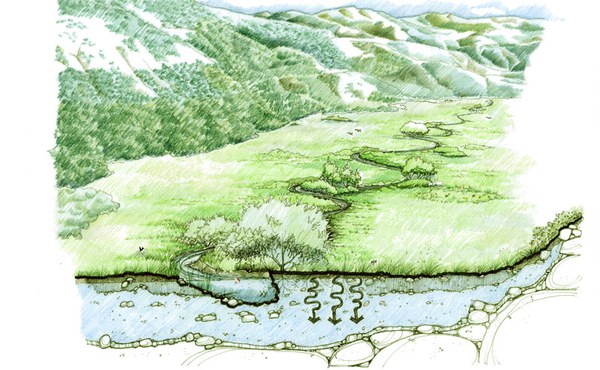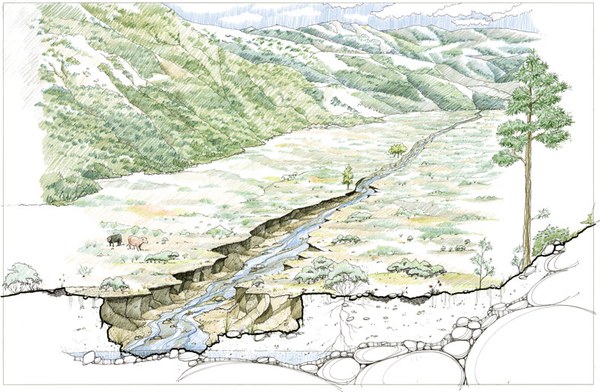Groundwater plays an important role in the restoration of streams here in Central Oregon. But what is groundwater and why does it matter? Let's dig deeper!
What is groundwater?
Groundwater is the water found underground in the cracks and spaces in soil, sand, and rock.
Why does groundwater matter?
Besides providing an important source of drinking water, groundwater helps regulate the temperature of creeks and rivers for plants, fish and wildlife. In warm summer months when streams are low, groundwater is naturally released into creeks and helps cool waters to keep them at a healthy temperature for fish. Groundwater at Land Trust Preserves on Whychus Creek plays an important role in helping returning steelhead and salmon thrive in Whychus Creek.


One of the main goals of our restoration projects on Whychus Creek and other Preserves is to increase groundwater levels. At Camp Polk Meadow Preserve where restoration was ongoing from 2009-2012, groundwater levels have risen by more than two feet. At Whychus Canyon Preserve, groundwater levels rose more than four feet between 2015-2019 after restoration was complete! Both Preserves are now home to healthier meadow and creek systems where fish, birds, and other wildlife can flourish.
How do you monitor groundwater?
Through groundwater wells. Groundwater wells are simply PVC pipes that are drilled into the ground. Once the pipe is in place, we can measure the distance of the groundwater from the ground's surface and track how that measurement changes over time. Measuring groundwater in the initial years before restoration projects begin is an important step in establishing baseline water levels. We then continue to measure levels during and after restoration to see how the restoration effects the groundwater and surrounding meadows and creek.
Learn more:
- The Importance of Meadows
- The Significance of the Hyporheic Zone
- Wood is Good: The Importance of Woody Debris in Streams


